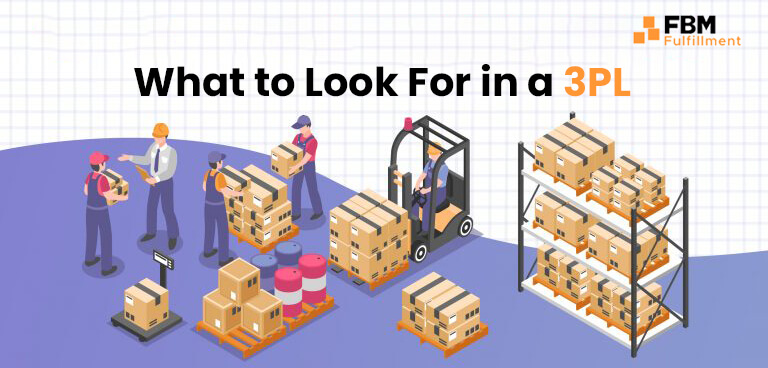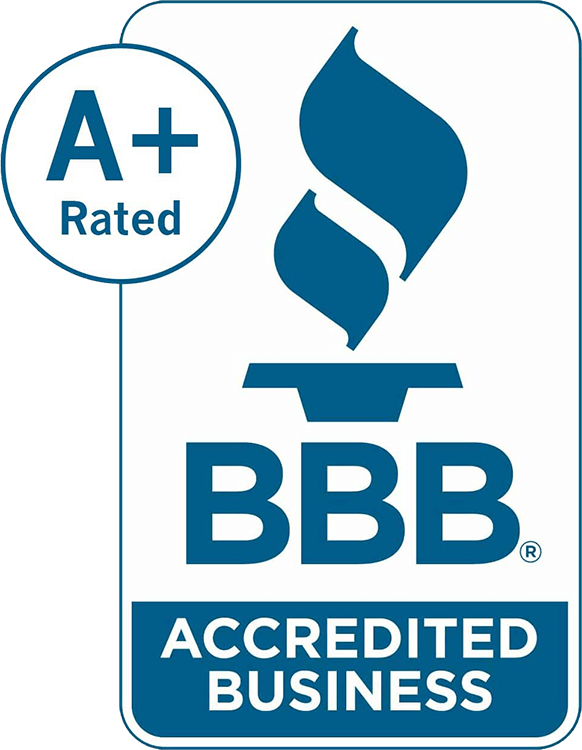The Ultimate Glossary of E-commerce Fulfillment and Inventory Management Terms
Understanding e-commerce fulfillment and inventory management is essential for running a successful online business. This glossary covers key terms related to third-party logistics (3PL), inventory control, warehousing, and order fulfillment.
A
Accessorial Fee
Additional charges applied by carriers for extra services like inside delivery, liftgate service, or residential delivery. These fees are not included in standard shipping rates.
Active Product
A product currently being sold and stocked in inventory. It is regularly updated to ensure availability for customers.
Air Waybill (AWB)
A document issued by an air carrier with shipment details, acting as a contract between the shipper and carrier. It includes tracking information and shipping instructions.
Allocated
Inventory that has been reserved for a specific order or purpose, ensuring availability when needed.
Amazon FBA (Fulfilled by Amazon)
A service where Amazon stores, picks, packs, and ships sellers’ products, handling customer service and returns.
Amazon FBM (Fulfilled by Merchant)
A fulfillment method where sellers store and ship products themselves rather than using Amazon’s fulfillment centers.
Amazon Warehouse Fulfillment
A process in which Amazon fulfillment centers manage the storage and shipping of products on behalf of sellers.
Amazon Warehouse vs. Fulfillment Center
Amazon warehouses store bulk inventory for long-term storage, while fulfillment centers are designed for rapid order processing and shipping.
API (Application Programming Interface)
A technology that allows different software systems (e.g., Shopify and 3PLs) to communicate and exchange data seamlessly.
Arrival Notice
A notification sent to the consignee or broker indicating the arrival of a shipment at its destination.
Available
Inventory that is in stock and ready to be shipped.
Awaiting Fulfillment
The status of an order that has been received but not yet processed for shipping.
B
B2B (Business-to-Business)
Transactions between businesses, such as a retailer purchasing inventory from a supplier for resale.
B2C (Business-to-Consumer)
Sales made directly from a business to the end consumer via an online store or other channels.
Back Order (Back Ordered)
An order placed for a product that is currently out of stock but will be shipped once replenished.
Bar Code
A machine-readable code that represents product details used for tracking and inventory management.
Bill of Lading (BOL)
A legal document between the shipper and carrier outlining shipment details and terms, acting as a receipt for goods.
C
CBP (Customs and Border Protection)
The U.S. government agency responsible for regulating imports and exports and enforcing trade laws.
Certificate of Origin
A document certifying the country where a product was manufactured, often required for customs clearance.
Commercial Invoice
A document used for customs declaration containing shipment details such as value, description, and country of origin.
Consignee
The recipient of a shipment, typically the buyer or designated agent.
Container Loading (Container Stuffing)
The process of strategically loading goods into a shipping container to maximize space efficiency.
Container Tracking
A system used to track the location and status of a shipping container during transit.
Synonyms: Shipment tracking, Cargo tracking.
Container Number
A unique identifier assigned to a shipping container for tracking purposes.
Customs Broker
A licensed professional who assists businesses in clearing goods through customs, ensuring compliance with regulations.
Customs Clearance
The process of passing goods through customs authorities to ensure that taxes, duties, and regulations are satisfied.
Synonyms: Import clearance, Border clearance.
D
D2C (Direct-to-Consumer)
A business model where brands sell directly to consumers without intermediaries, often through e-commerce platforms.
Dangerous Goods
Products classified as hazardous due to their chemical or physical properties, requiring special handling and documentation.
Dangerous Goods Declaration
A document that identifies hazardous materials in a shipment, ensuring proper handling and regulatory compliance.
Synonyms: Hazmat declaration, Hazardous materials declaration.
DDP (Delivered Duty Paid)
A shipping term where the seller takes full responsibility for the delivery of goods, including all taxes, customs duties, and fees.
Synonyms: Prepaid delivery, Seller’s responsibility.
DDU (Delivered Duty Unpaid)
A shipping term where the seller delivers goods to the buyer but the buyer is responsible for paying any customs duties and taxes.
Synonyms: Buyer pays duties, Unpaid delivery.
Delivery Exception
A situation where a shipment cannot be delivered as planned due to issues like weather, damage, or customs delays.
Synonyms: Delivery delay, Shipment disruption.
Demurrage
Fees incurred when goods are delayed in transit or storage beyond the allowed free period.
Synonyms: Delay charges, Storage fees.
DeVaning
The unloading process of goods from a shipping container.
Synonyms: Container unloading, Cargo unloading
Dimensional Weight
A pricing method used by carriers based on package volume rather than actual weight to determine shipping costs. It is calculated using the formula:
Dimensional Weight (lbs) = (Length × Width × Height) / Dimensional Factor
- The dimensional factor is typically 139 for domestic shipments and 166 for international shipments in the U.S.
- If the dimensional weight exceeds the actual weight, carriers charge based on the dimensional weight rather than the actual weight.
For example, a package measuring 20″ × 15″ × 10″ and weighing 10 lbs would be calculated as follows:
- (20 × 15 × 10) ÷ 139 = 21.6 lbs (rounded up to 22 lbs)
- Since the dimensional weight (22 lbs) is greater than the actual weight (10 lbs), the carrier will bill for 22 lbs.
Drayage
The transportation of goods over short distances, especially from a port to a warehouse or distribution center.
Synonyms: Local delivery, Short-haul trucking.
Dropshipping
A fulfillment method where retailers sell products without holding inventory; suppliers ship directly to customers.
Duties
Taxes imposed on imported goods that must be paid before clearance.
Dunnage
Materials used to protect goods during shipping, such as foam or plastic, to prevent damage.
Synonyms: Packing material, Protective packaging.
E
E-commerce Fulfillment Warehouse
A facility that handles inventory storage, order processing, and shipping for online retailers.
E-commerce Platforms or Channels
Online platforms, such as Amazon, eBay, or Shopify, where goods are sold directly to customers.
Synonyms: Online marketplaces, Digital storefronts.
EDI (Electronic Data Interchange)
A digital system for exchanging business documents between companies without manual intervention.
F
FBA or FBM
A decision retailers make between using Amazon’s fulfillment services (FBA) or managing their own shipping (FBM).
FCL (Full Container Load)
A shipping term where an entire container is used for goods from a single shipper, usually more cost-effective for large shipments.
Synonyms: Full container shipment, Dedicated container.
Freight Forwarder
A company that arranges the transportation of goods from one location to another, handling logistics and paperwork.
FOB (Free On Board)
A shipping term indicating the seller delivers goods to a specified point, after which the buyer assumes responsibility.
Synonyms: Freight on board, Seller’s responsibility up to a point.
FOB Destination
A shipping term where the seller is responsible for delivering goods to the buyer’s location, including the shipping costs and risks.
Synonyms: Delivery included, Seller delivers to buyer’s location.
FOB Origin
A shipping term where the buyer takes responsibility once goods leave the seller’s premises or warehouse.
Synonyms: Buyer takes responsibility, Goods shipped at origin.
FTL (Full Truckload)
A shipping arrangement where a truck is filled with goods from a single shipper, maximizing efficiency.
Synonyms: Full load shipping, Single shipper trucking
Fulfillment (Fulfilment)
The process of receiving, processing, and delivering customer orders efficiently.
Fulfillment Center
A warehouse that processes, packs, and ships online orders on behalf of e-commerce businesses.
G
Gross Weight
The total weight of a shipment, including packaging and shipping materials.
H
Harmonized System Code
A classification code used by customs to categorize traded goods for tariff and regulatory purposes.
Synonyms: HS Code, Tariff code.
I
Import Bond
A financial guarantee required by U.S. Customs to ensure that import duties, taxes, and fees are paid before a shipment enters the country. It is mandatory for commercial imports exceeding $2,500 or shipments subject to federal regulations. There are two main types:
- Single Entry Bond – Covers a one-time import transaction.
- Continuous Bond – Covers multiple shipments over a 12-month period, ideal for frequent importers.
Import bonds are issued by surety companies and must be obtained before the goods arrive at the port of entry.
Importer of Record
The party responsible for ensuring that goods meet regulatory compliance when entering a country, and for paying necessary duties and taxes.
Synonyms: Importing entity, Customs account holder.
In Stock
Products available in inventory and ready for immediate sale and shipping.
Intensive Exam (Customs)
A thorough inspection by customs officials to ensure compliance with regulations and confirm the legitimacy of imported goods.
Synonyms: Detailed customs check, Customs inspection.
Inventory Management
The process of tracking stock levels, sales, replenishment, and storage to ensure smooth operations.
ISF (Import Security Filing)
A U.S. requirement for importers to file information about their goods before shipment arrives at the U.S. port.
Synonyms: 10+2 filing, Import documentation.
K
Kitting (Bundling)
The process of combining different products into a single package or kit for easier fulfillment and distribution.
Synonyms: Product assembly, Pre-packaging.
L
Last Free Day
The final day a container or shipment can stay in a port without incurring additional storage charges.
Synonyms: Free storage period, End of free time.
Last Mile Delivery
The final stage of the shipping process where goods are delivered from the distribution center to the customer’s address.
Synonyms: Final delivery, Doorstep delivery.
LCL (Less than Container Load)
A shipping method where multiple shipments share space in a single container.
Lead Time
The time it takes for a product to be manufactured and delivered.
LTL (Less than Truckload)
A shipping method for smaller freight loads that do not require a full truck.
M
Manifest
A document that lists all items being transported in a shipment, used for customs and logistics purposes.
Synonyms: Shipping list, Cargo declaration.
Master Carton
A large carton containing smaller individual packages of goods, typically used for storage or shipping.
Synonyms: Bulk carton, Shipping carton.
N
Net Weight
The weight of the product itself, excluding any packaging or other materials.
Synonyms: Product weight, Excluding packaging.
Non-Resident Importer of Record
A foreign business or entity that acts as the importer of record for goods entering a country where it does not reside.
Synonyms: Foreign importer, International importer.
O
On Backorder
A product currently unavailable but expected to be restocked soon.
On Hand
Inventory physically present in a warehouse.
On Order
Products that have been ordered but have not yet been received into inventory.
Synonyms: Pending stock, Awaiting delivery.
Origin
The location where goods are manufactured, sourced, or shipped from.
Synonyms: Shipping origin, Point of departure.
P
Packing List
A document listing all items in a shipment, used for inventory tracking and customs clearance.
Synonyms: Shipping list, Inventory list.
Pro Number
A unique tracking number assigned to a shipment for freight logistics purposes.
Synonyms: Freight number, Shipment tracking number.
Purchase Contract
A formal agreement outlining the terms and conditions of a sale between buyer and seller.
Synonyms: Sales agreement, Buying contract.
Purchase Order
A document created by a buyer that lists ordered items, quantities, and prices, serving as an official order to the seller.
Synonyms: Order form, Procurement order.
R
ReOrder Amount
The quantity of goods that need to be reordered to replenish stock levels based on sales history.
Synonyms: Restock amount, Replenishment quantity.
ReOrder Level
The inventory level at which new stock should be ordered to avoid running out of products.
Synonyms: Restock threshold, Replenishment point.
Replenishment Level
The optimal stock level maintained to ensure product availability without overstocking.
Synonyms: Restocking level, Inventory restock threshold.
Reserve Inventory
Stock set aside for specific purposes, such as high-priority orders or future sales.
Synonyms: Reserved stock, Protected inventory.
Retail Arbitrage
The practice of purchasing goods from one retailer at a low price and reselling them at a higher price.
Synonyms: Reselling, Product flipping.
S
S
Safety Stock
Extra inventory kept on hand to avoid stockouts in case of demand fluctuations or supply chain delays.
Synonyms: Backup stock, Buffer inventory.
Sell Ahead
The practice of selling products before they are physically available, often through pre-orders.
Synonyms: Pre-sell, Advance sales.
SKU (Stock Keeping Unit)
A unique identifier for each product variant in inventory.
SPD (Small Parcel Delivery Amazon)
Amazon’s Partnered Carrier Program is a discount shipping service offered by Amazon to its sellers. With it, you have the options for Small Parcel Delivery (SPD), Less Than Truckload (LTL), and Full Truckload Shipments. This program lets Amazon sellers quickly and easily restock their inventory, create shipments, and print shipping labels all in one place.
Sourcing Agent
A professional who helps businesses find suppliers and manufacturers.
T
Tail Gate Exam (Customs)
A physical inspection of goods conducted at the back of a truck, typically at a customs checkpoint.
Synonyms: Cargo inspection, Truck inspection.
Tariff Code
A code used to classify products for customs duties and taxes.
Synonyms: Harmonized Code, HS Code.
Third Party Billing
A billing arrangement where a third party, such as a logistics company or freight forwarder, pays for shipping or fees.
Synonyms: External billing, Third-party payment.
V
VACIS Exam
A non-intrusive scanning method used by customs to inspect containers for contraband or illegal items.
Synonyms: Container scanning, Non-invasive customs exam.
Vendor
A supplier or seller of goods, typically responsible for providing products to an e-commerce business.
Synonyms: Supplier, Seller.
Virtual Kitting (Virtual Bundling)
A feature provided by robust WMS systems that allows the user to define a dynamic kit sku. When ordered and queued for picking, the system directs the picker to pick all the components of the kit on the fly. This makes for much more efficent inventory managment because you can sell the component and the kit from the same stock inventory.
W
WMS (Warehouse Management System)
Software that tracks inventory and optimizes warehouse operations.
Waybill
A document accompanying a shipment with details about its origin, destination, and contents.
Numbers
3PL (Third-Party Logistics)
A logistics provider that manages warehousing, fulfillment, and shipping for businesses.
3PL Logistics
The coordination of supply chain activities, including transportation, warehousing, and fulfillment, by a third-party provider.
3PL Warehouse
A storage facility managed by a third-party logistics provider, handling inventory and order fulfillment for multiple businesses.
This glossary serves as a comprehensive reference for e-commerce business owners, helping them navigate fulfillment and inventory management concepts with ease. Mastering these terms will enhance efficiency and scalability in e-commerce operations.




